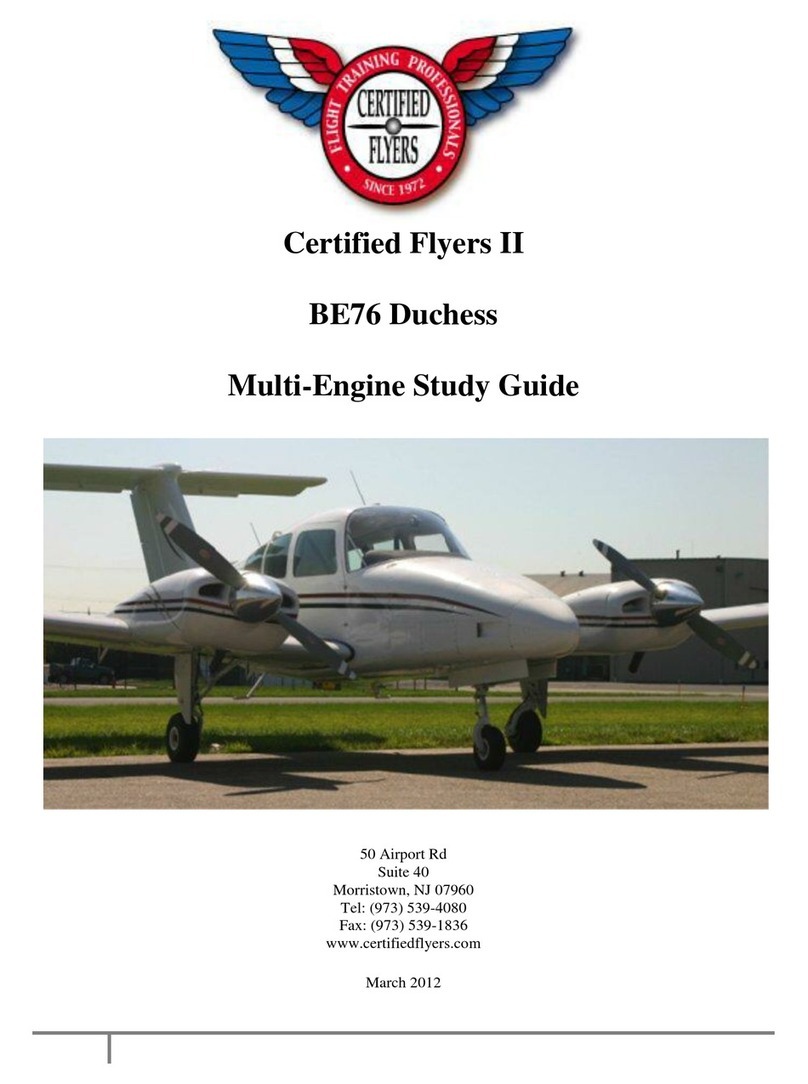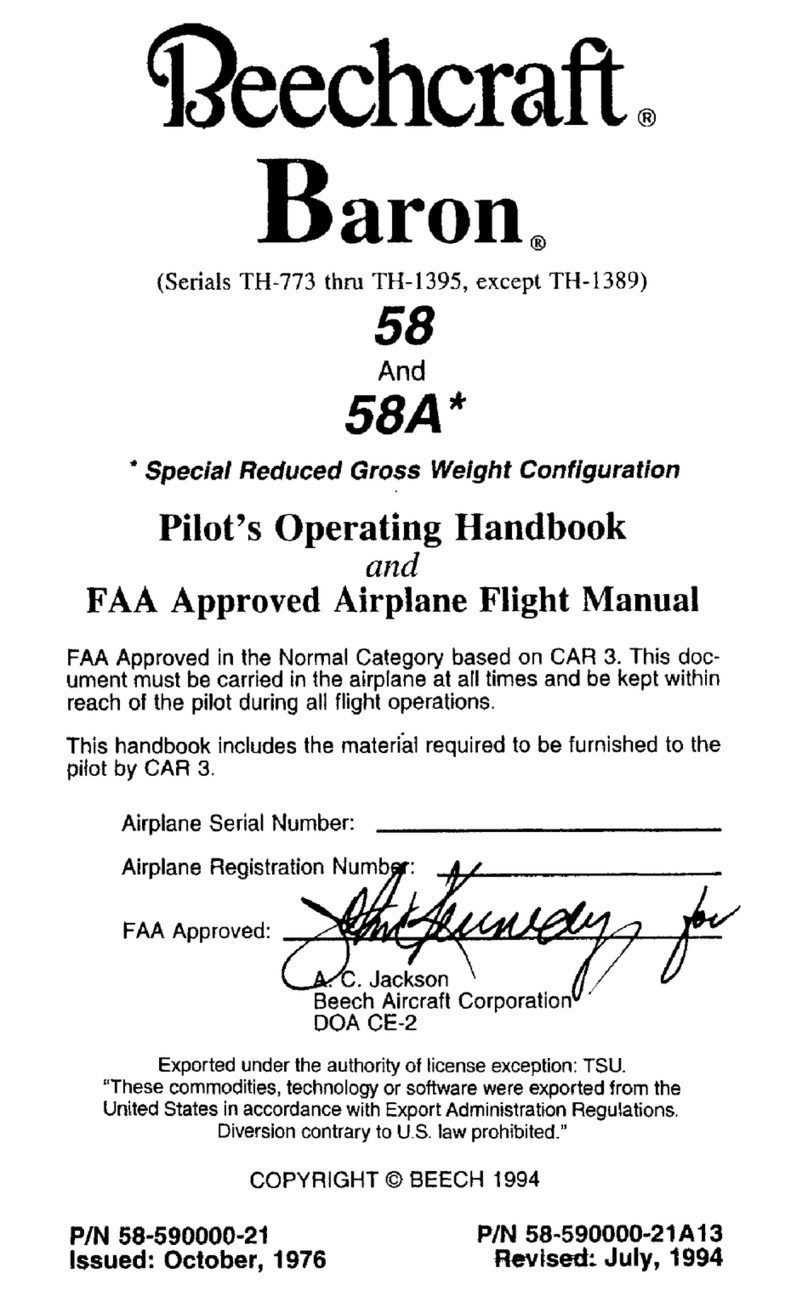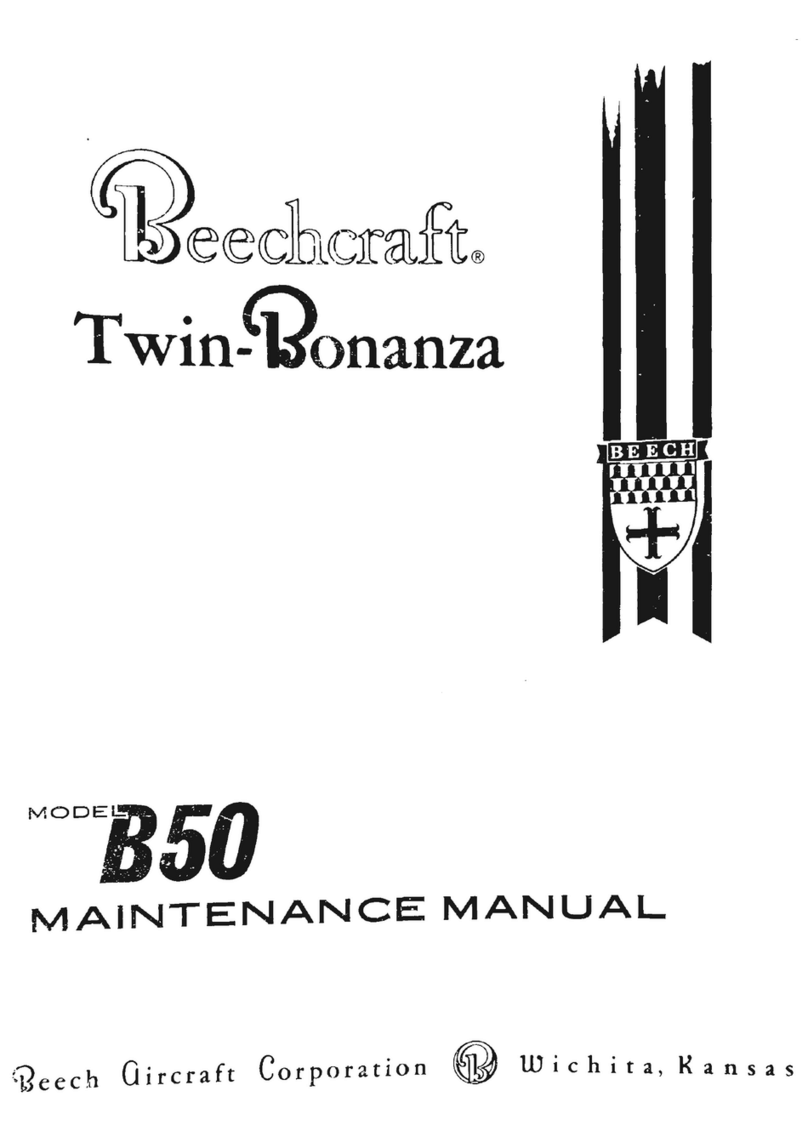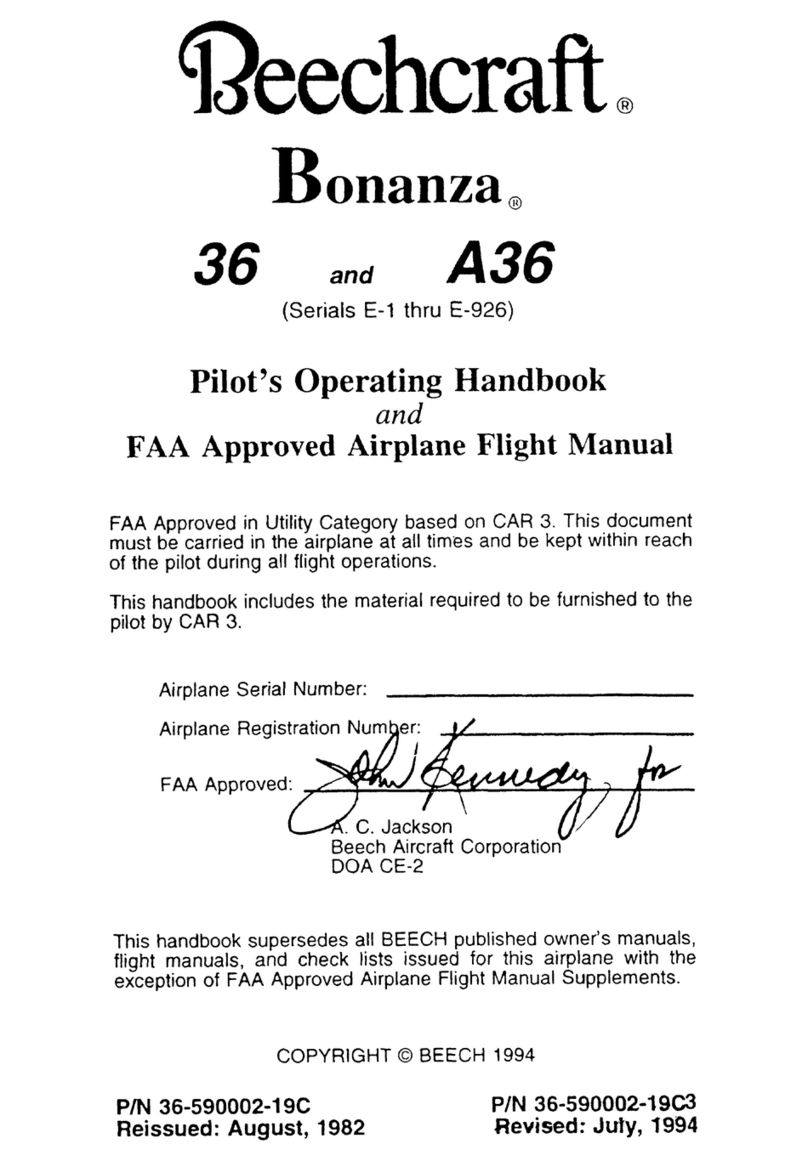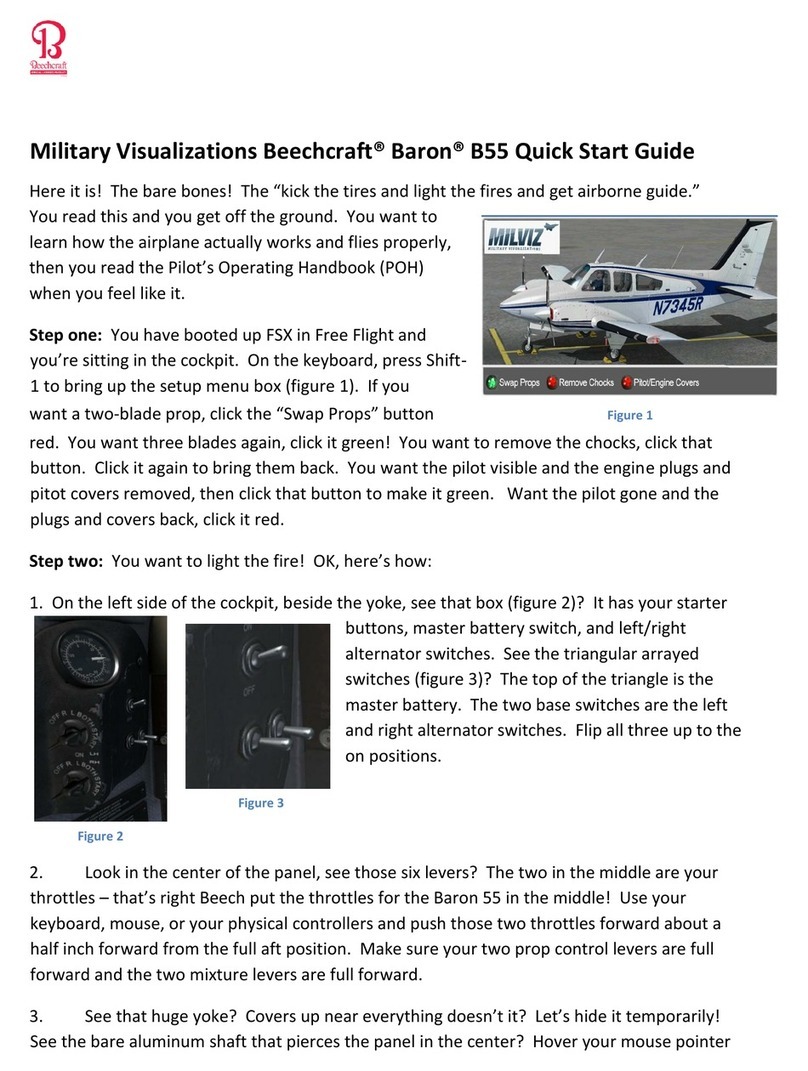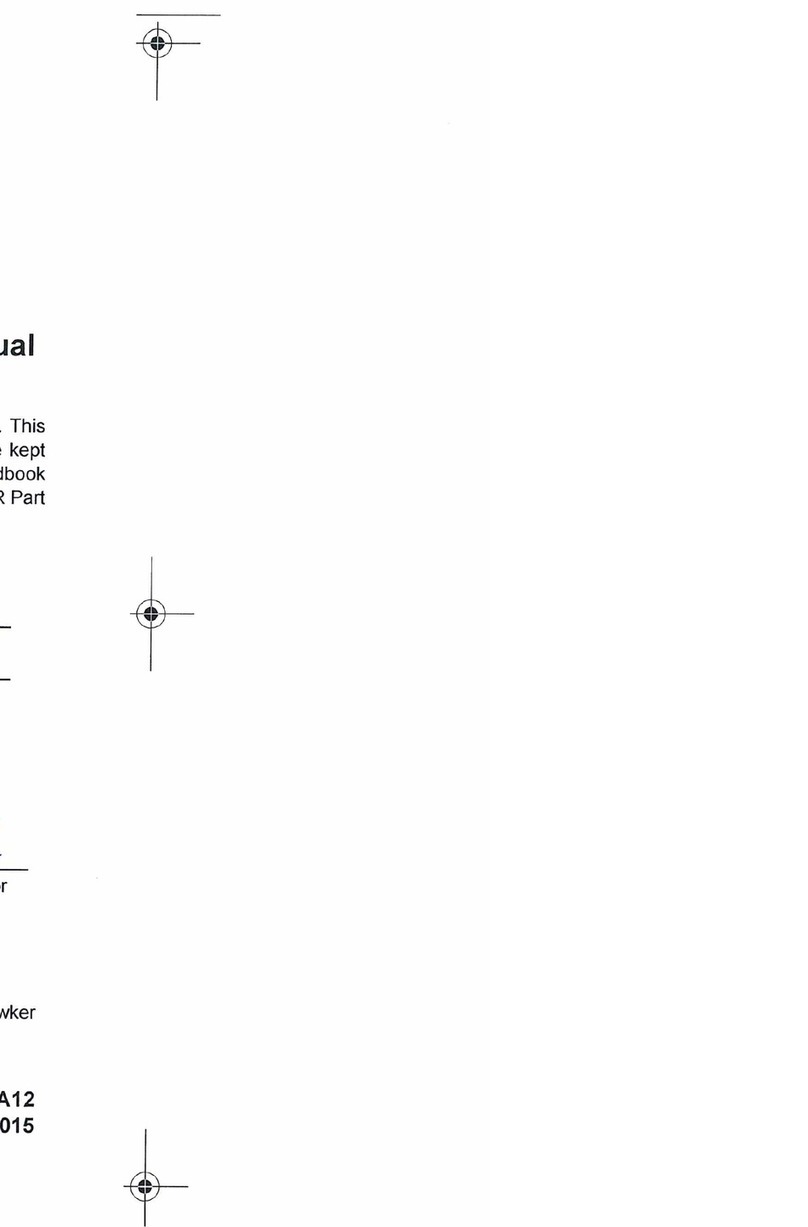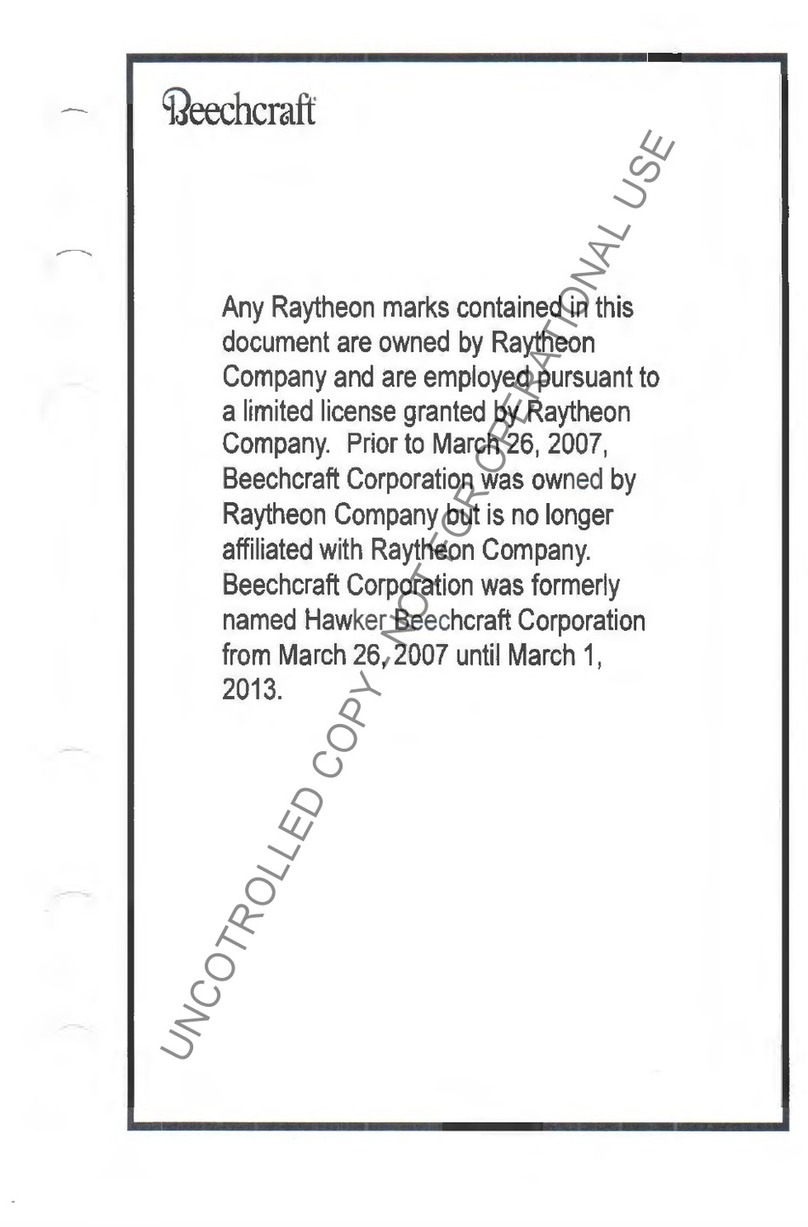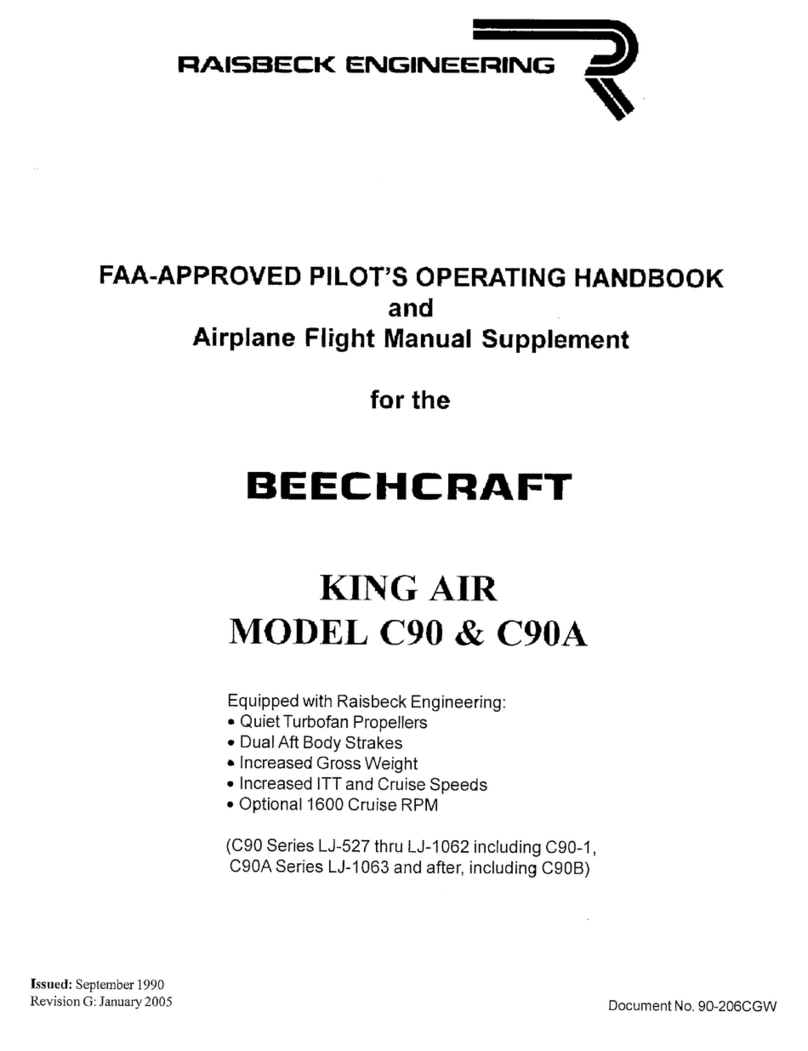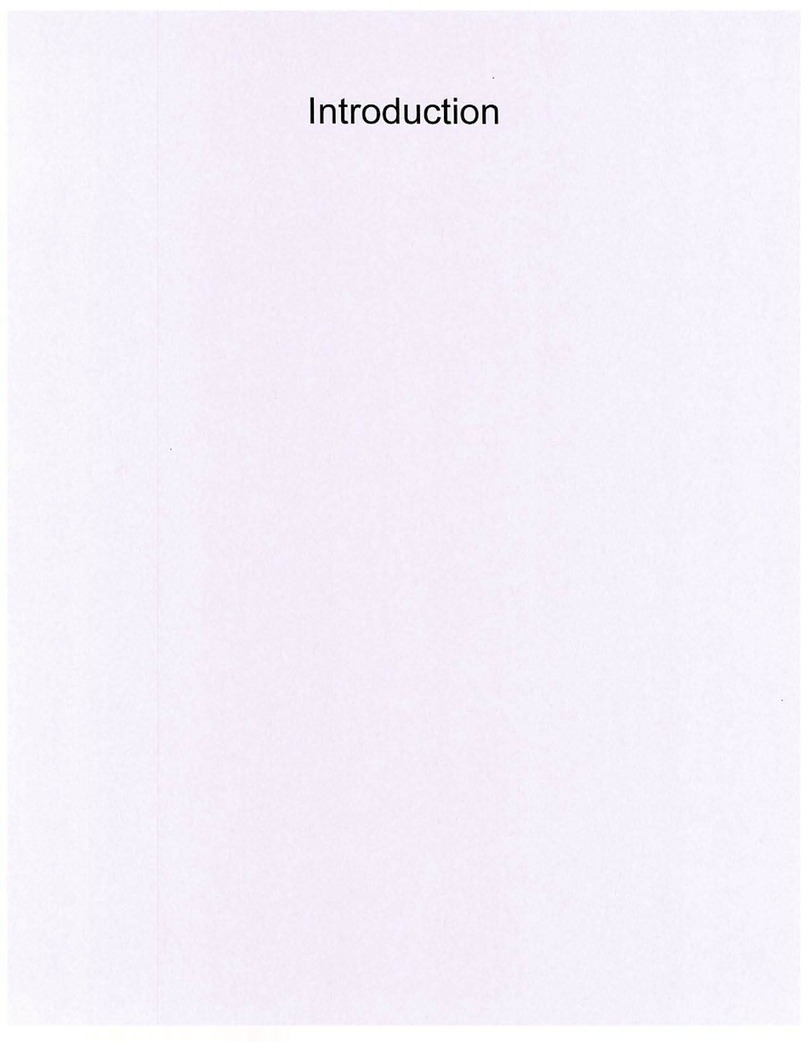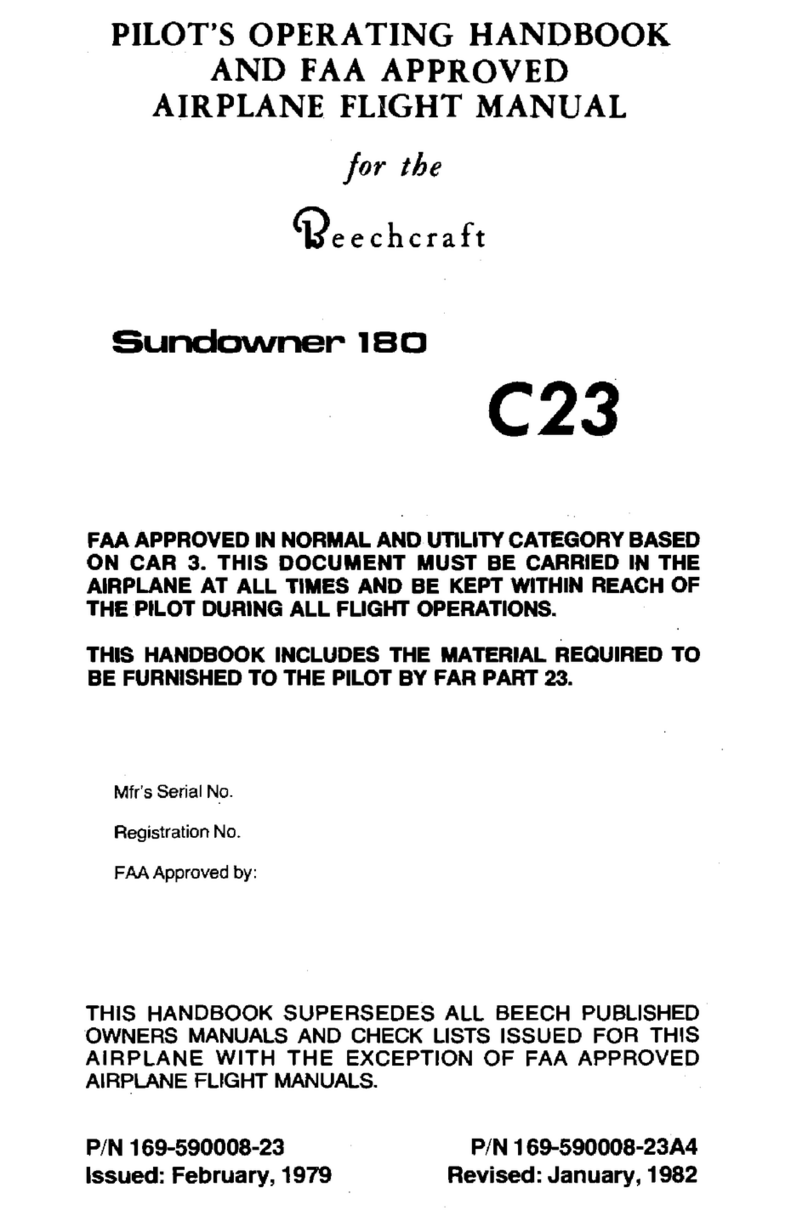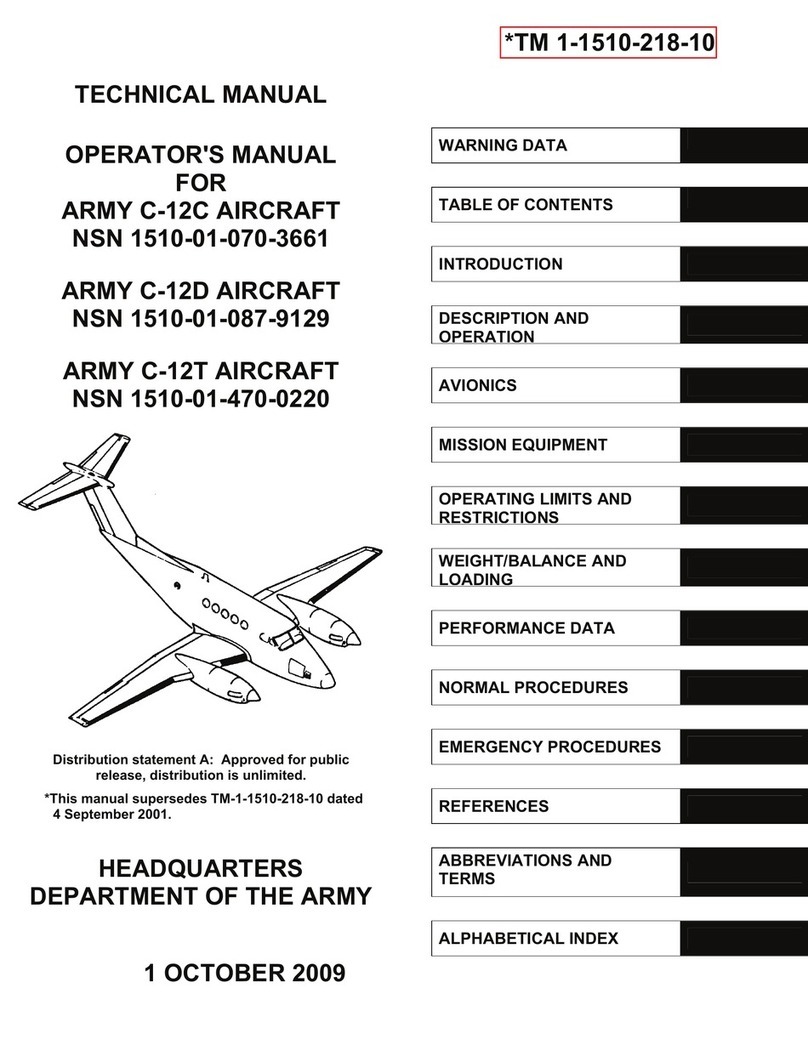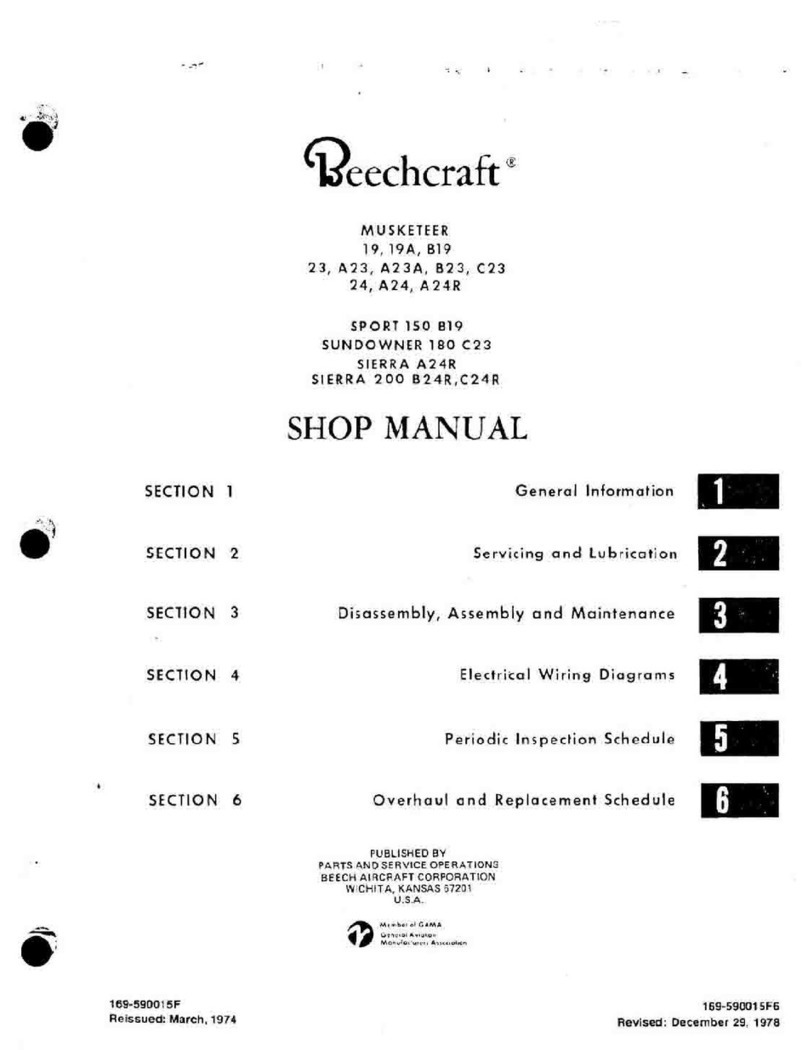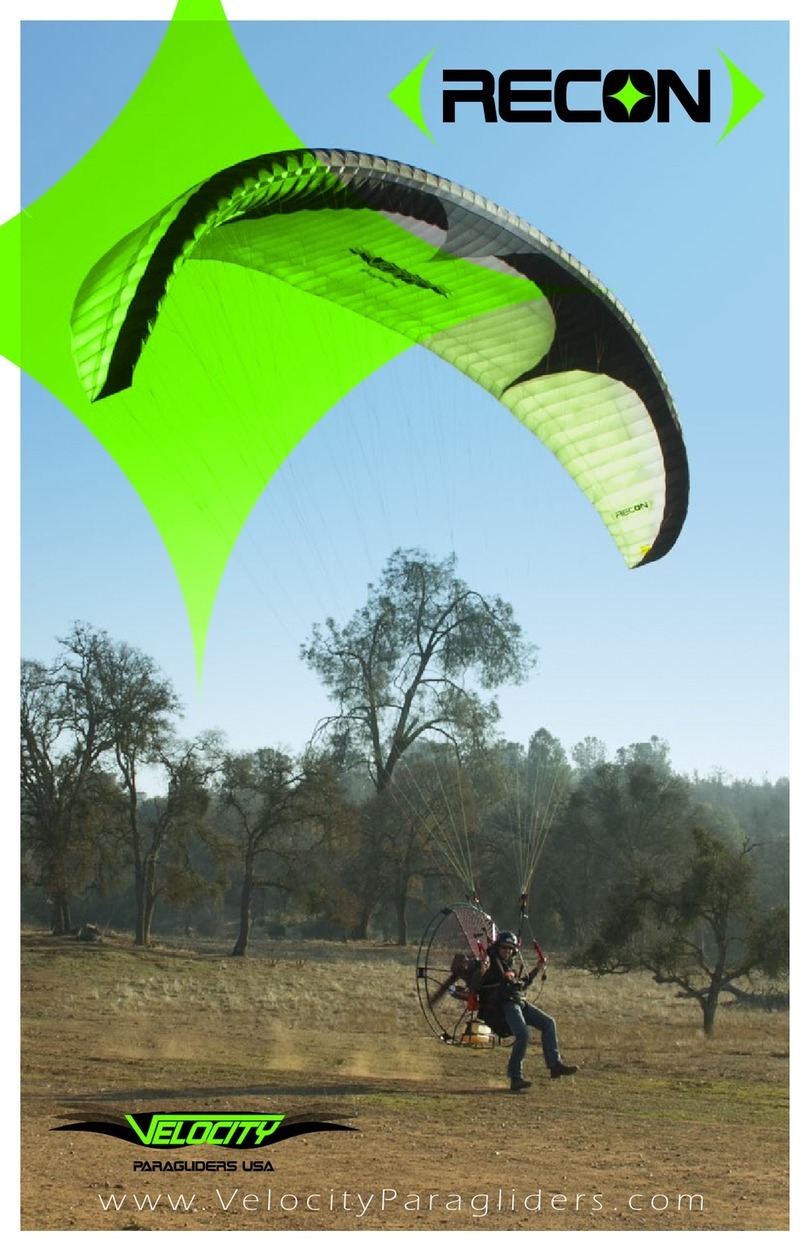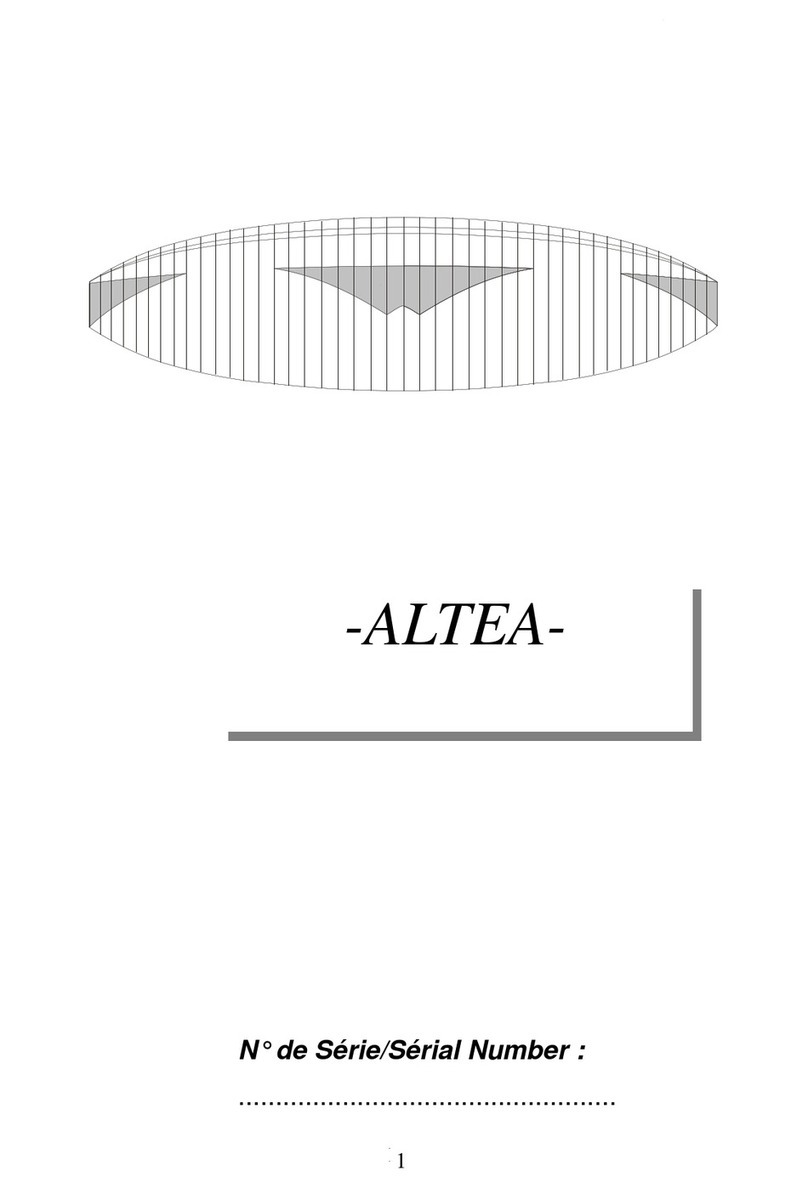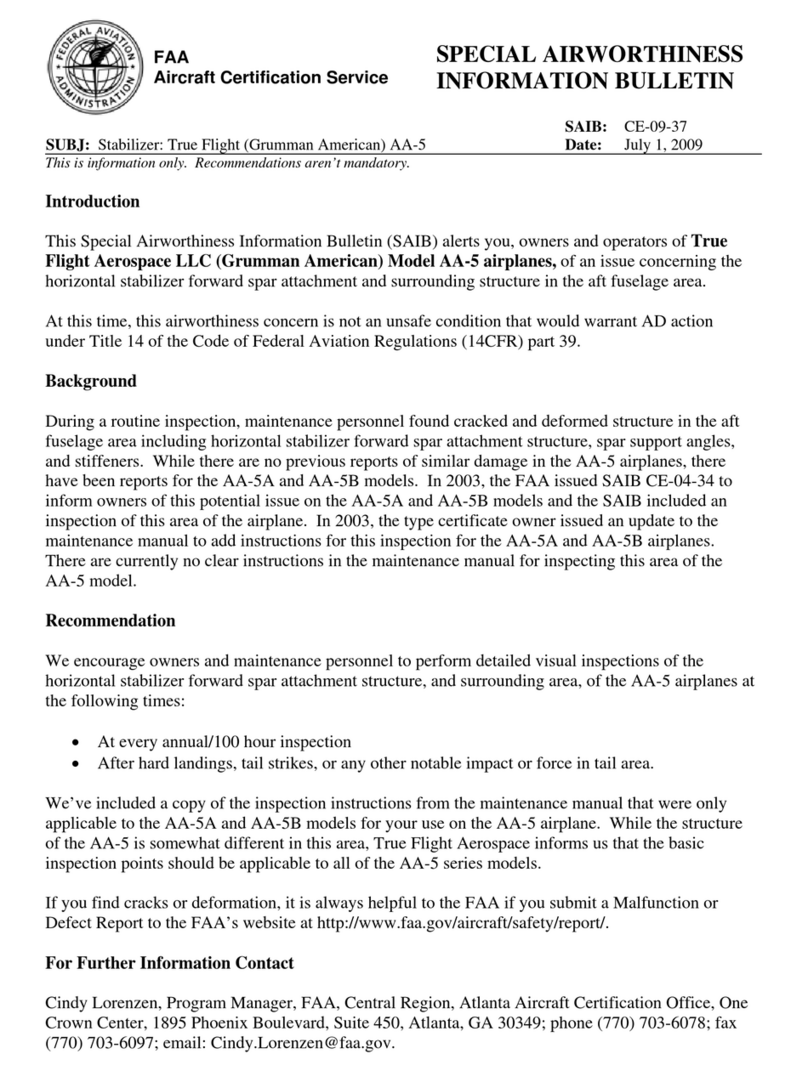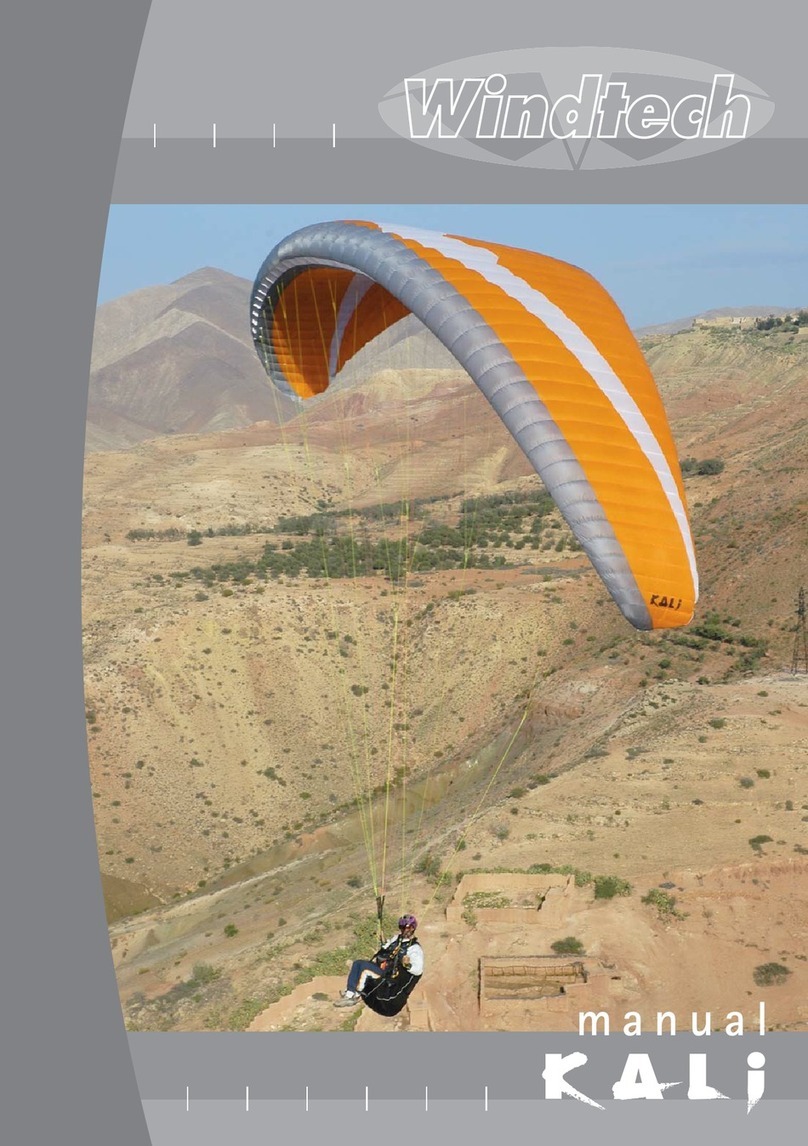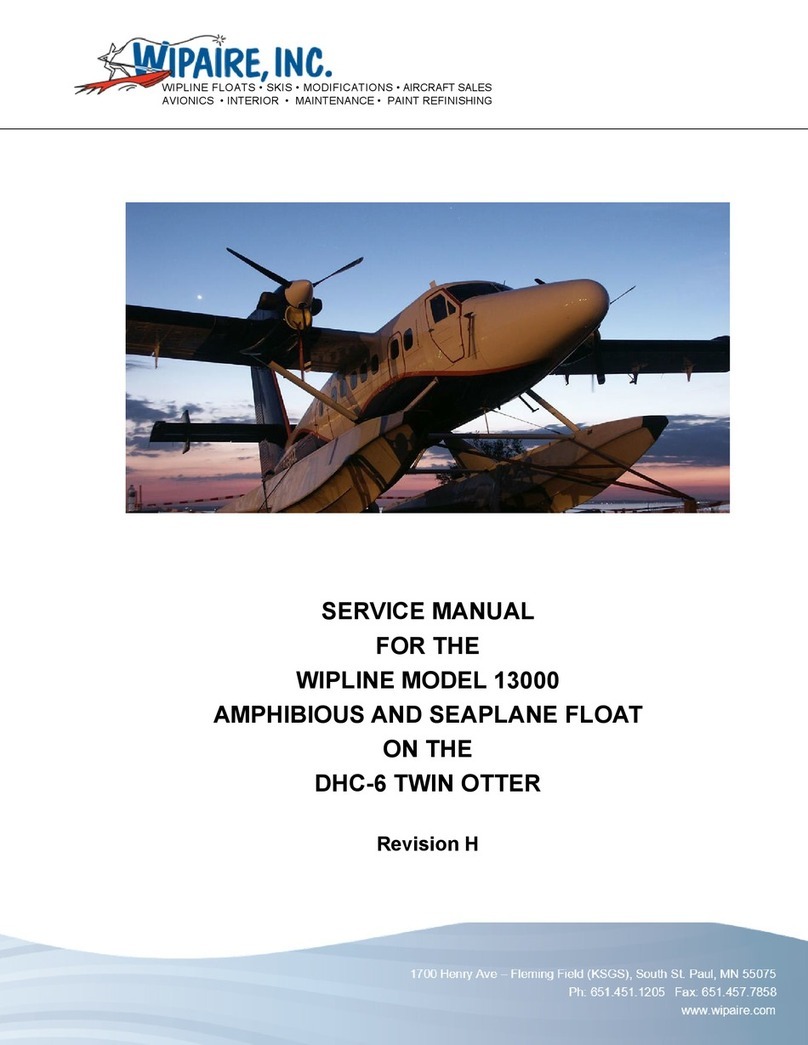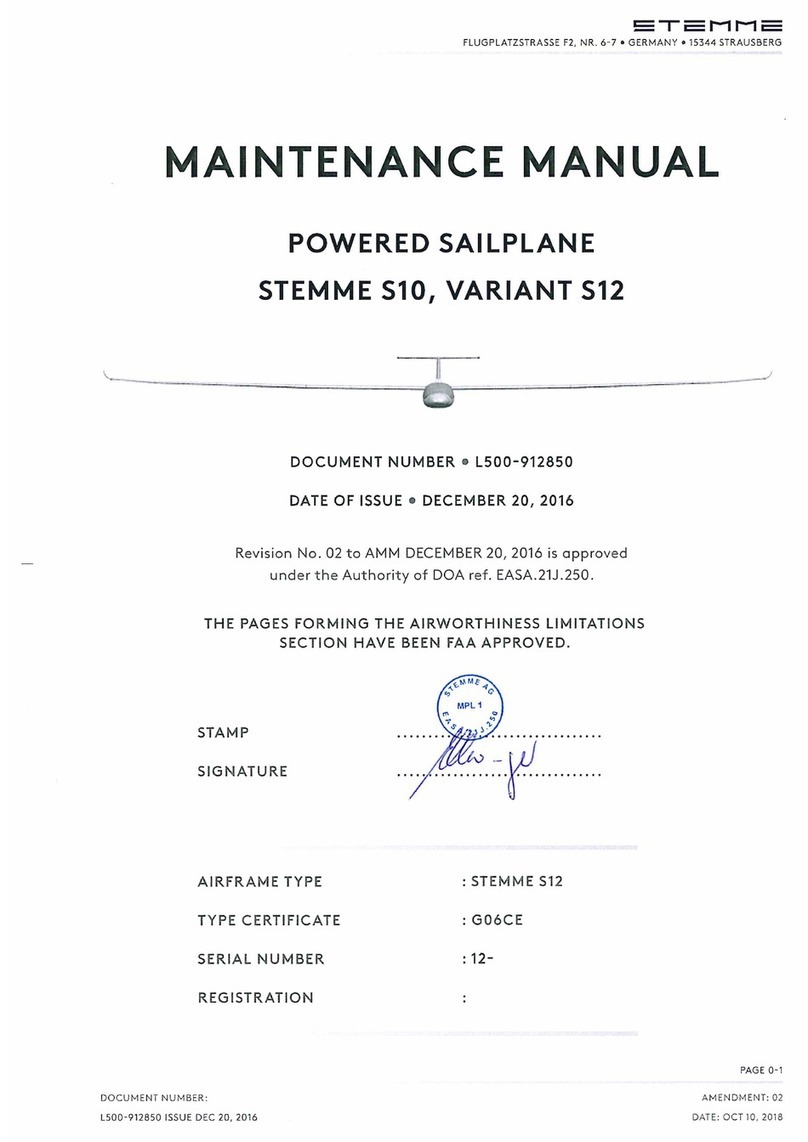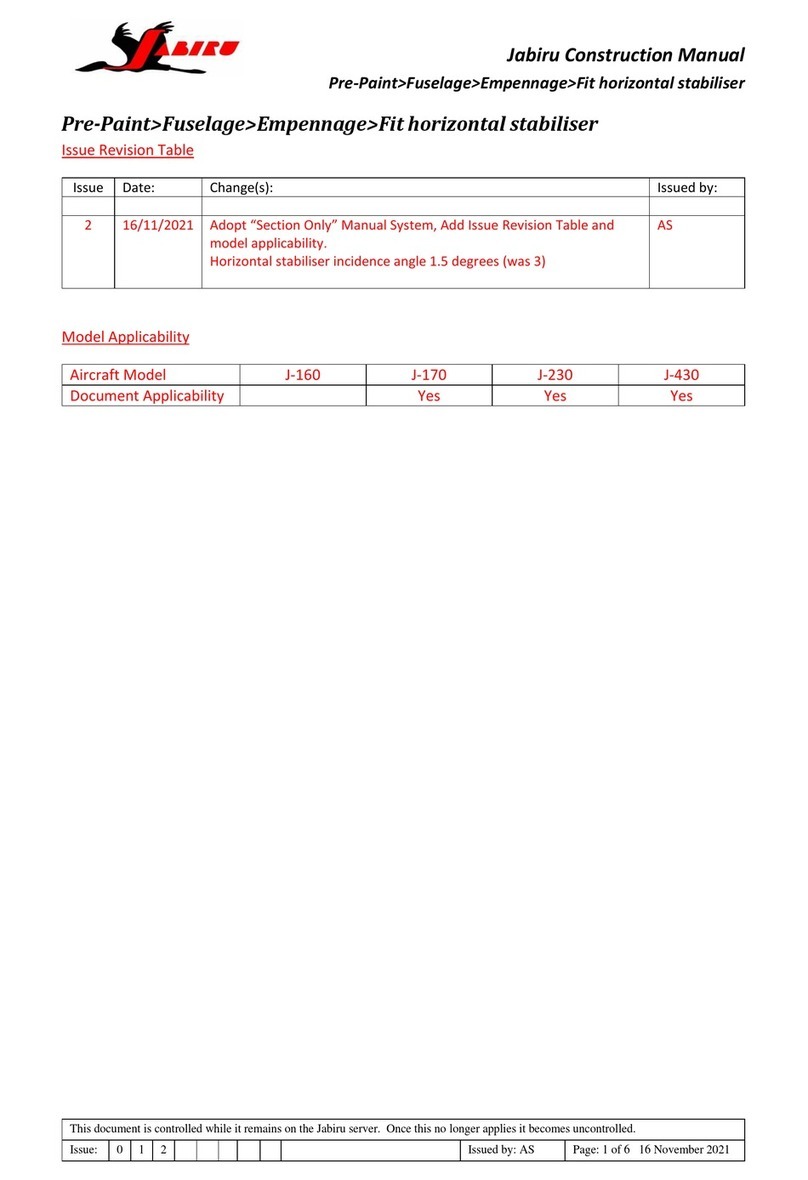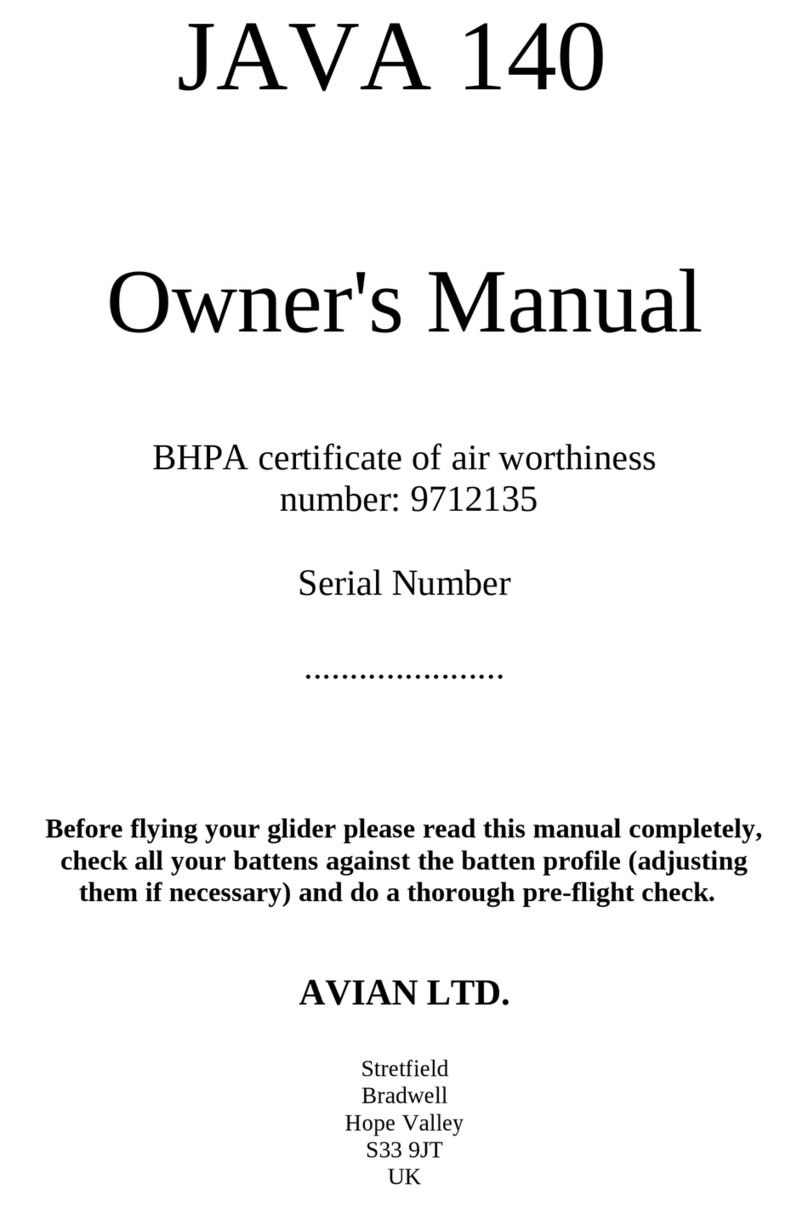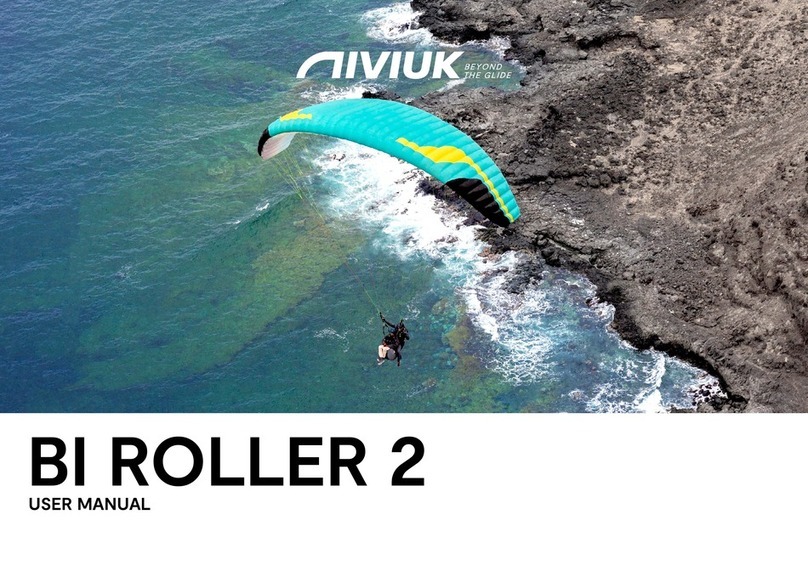IMPORTANT
(flease
attach
this Owner's Manual Supplement to the inside cover
of
the .
OWner's Manual or
other
suitable location which
is
readily available
to
the
pilot.)
.
~
OWNER'S
MANUAL
SUPPLEMENT
for
K35, M35, N35, P35, S35, V35, V35TC, V35A,
V35ATC,V35B,
V35B TC
33,
AS3, B33, C33, E33,
F33,
G33, C33A, E33A,
F33A,
36, A36.
The
follo
.
~ing
information supersedes the informatiori contained in the
Owner's Manuals for the above listed airplanes.
1:
Maximum usable· fuel
of
each 25
or
24~
gallon main tank
is
22
gallons.
Maximum usable fuel
of
each
39
or
40
gallon main
tank
is
37 gallons.
3. Approximate reduction in range with füll fuel due to change in usable
fuel is:
a. 13%
on
22
gallon main ·tank system.
b. 9% on 37 gallon main
tank
system.
4.
On
Models K-35, M-35,
33,
and A33 Owners Manuals, reduce range by
an additional 190 statute rniles to account for climb and 45 minutes
rese:r:ve
at
45% maximum continuous power.
P/l'J
35-590118-17 lssued: February 11, 1972 . ,
~Weechcraft
Debonair
you
should:
-
:ii
-
-
~
.
·
~
,_
.
...
.
tr"
Y"'"
""
( '
Get
~~qnainted
with
your
airplane
Read
al
1
of
thi
.s
manual
carefully
to
become
fam
i1
iar
wi
th
the
operation
of
your
new
Debonai
r.
K
ee
p
yo
~
r
airplane
loo
kin~
a
nd
r
u
n
n~
ng
lik
e .
n
e~v
\ "
Know
wh
en
to
have
y
'Q
u'r
Debonai
r
servi
·
\;ed
insi
de
and
out.
\ \
'ikechcr.aft
Deb
~'li
1fr
'
~M
-s
;:ser
vice
r -....„ -„„_
·
'.'_o~
r
air
pl
a n
e!l-s
-
·
~
f~Je
1~il
is
your
B
eecL:~raft
.
·
~
~-
-
..
..
„__
Certified
Servi~e
Staitio1m
He'll
be
glad
to
answer
your
questions
or
discuss
any
problems
you
may
have
concerning
your
airplane.
The
operation,
care
and
maintenance
of
your
airplane
after
its
delivery
to
you
is
your
responsibilfty.
Your
author-
ized
Beechcraft
Sales
and
Service
Outlets
have
all
the
current
recommended
modification,
service
and
operational
procedures
designed
to
get
maximum
utility
and
safety
from
your
airplane.
iii




















